Just in time for that rosiest and most romantic of holidays, the theme of the Historical Sew Fortnightly Challenge #3, due Sat 15 Feb, is Pink.
Pink is an interesting choice for a historical based colour challenge, because pink is, in itself, a fairly modern concept as a colour in the West. More than a few hundred years ago, the shades that we might term pink were considered variants of red or brown. To make pink even trickier, when you look at older garments and older illustrations of garments, it’s hard to tell if a fabric was intended to be a pinkish tone, or has faded to that from brown or red.
So, in choosing inspiration for your pink item, and your pink materials, you’ll have to use your own discretion to decide if your colour is a shade of pink, and if that pink would have been appropriate to your timeperiod and the status of the wearer, as such things matter to you.
To give you a jumpstart, I’ve created a pinterest board of rosy-hued fashions (or at least ones that I consider pink). It runs in roughly chronological order backwards in time – so far I’m only up to the end of the 18th century, but don’t worry – the last 145 years of HSF eligibility will be covered soon!
For now, here are a few of my favourite pink pretties:
You’ll remember Margaret of Anjou in her pink cloak, though the ensemble as a whole wasn’t very popular with many of you:
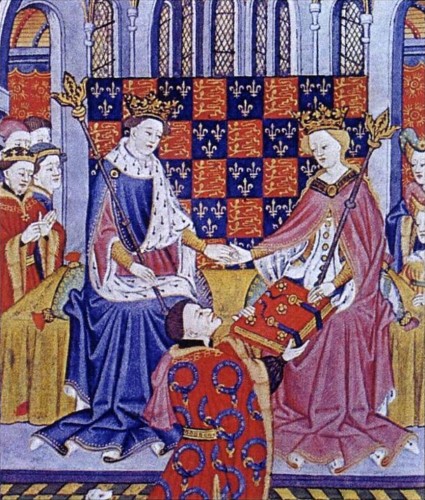
John Talbot, 1st Earl of Shrewsbury, presents the Book of Romances (Shrewsbury Book) to Margaret of Anjou, wife of King Henry VI, circa 1445 by the Talbot Master
At least Margaret’s cloak is definitely pink, not just faded red. It’s harder to tell what the shades of clothing in Domenico Ghirlandaio’s masterpieces were meant to be, but I hope at least some of the rosy shades in this work are close to his original vision, as they are so very fetching:
Pink was extremely fashionable throughout the Renaissance and into the Baroque, for men and women alike. I would LOVE to see Mr D in something like this:
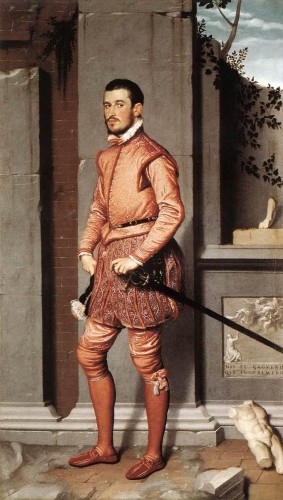
The Gentleman in Pink, Giovanni Battista Moroni , 1560, via Wikimedia Commons
I think this portrait of Mary, Queen of Scots is adorable. It’s like an Elizabethan valentine! Unlike her life, of course.
Due to the popularity of pink in the 17th century, there are some amazing pieces of extent clothing in equally amazing shades of pink:
The 18th century is pretty much pink, pink, and more pink. It’s so easy to find pink 18th century inspiration, with shades ranging from rich rose:
To lilac-pink:

Portrait of Mrs. Laura Keppel and her Sister Charlotte, Lady Huntingtower (1765). Allan Ramsay (Scottish, 1713-1784). Oil on canvas. Museum of Fine Arts, Boston
To cherry-blossom pink:
To the muted peach that was probably considered a shade of puce:

Robe a la polonaise, 1778—80, French, silk, Metropolitan Museum of Art, C.I.60.40.3a, b

Gallerie des Modes et Costumes Français. ‘L’aimable Constance’, Designed by François Louis Joseph Watteau, French (Valenciennes), 1758—1823, 1784, MFA Boston 44.1587
Pink remained popular for frocks, and less often, outer and over-wear, in the early 19th century, from this darling plaid number:
To the rich plum-pink of this frock:
Pink may have been momentarily displaced from the height of fashion by the bright shades of the new aniline dyes and the dark tones of late Victorian dress, but it certainly never disappeared. There were barely-pink shades like this:
To shades that definitely took advantage of the new dyes:
One of my favourite pink frocks of all time is not a fancy ballgown, but a very simple dress. I love the idea of a cook in her pretty pink frock:
More elaborate frocks are pretty too:
There are some glorious pink 1920s fashions, like this one which perfectly illustrates that, even in pink, 1920s frocks needn’t be frumpy or saccharine:
And I still love this pink-red Lanvin frock, even if my green ’20s dress didn’t end up looking anything like it:
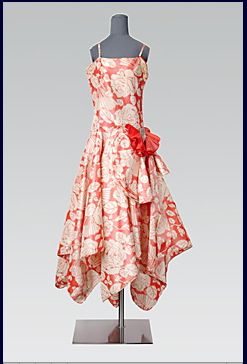
Evening dress, Jeanne Lanvin, mid 1920s, Drexel Costume Collection
And I know it’s just a catalogue illustration, but can you really imagine the middle dress with anything but pink bows!


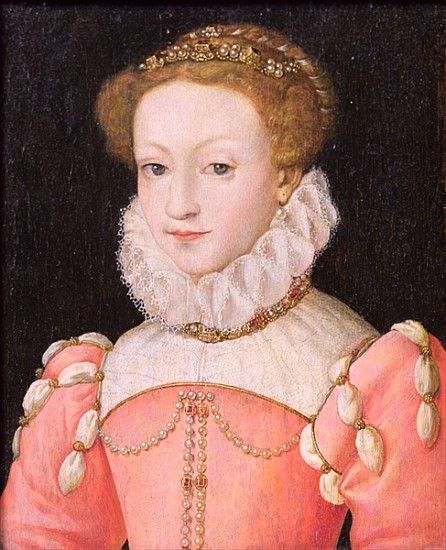
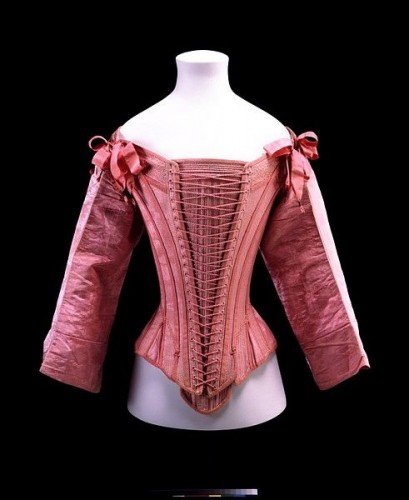
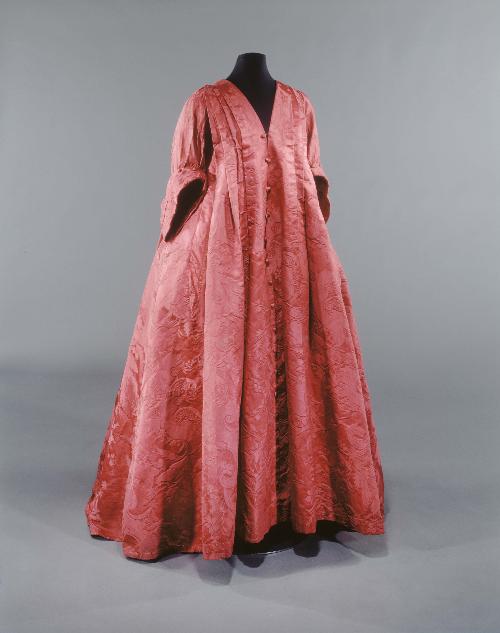
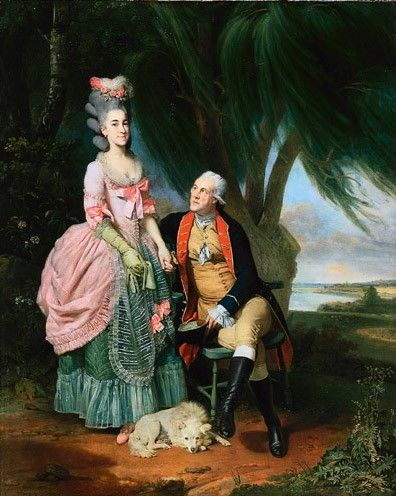


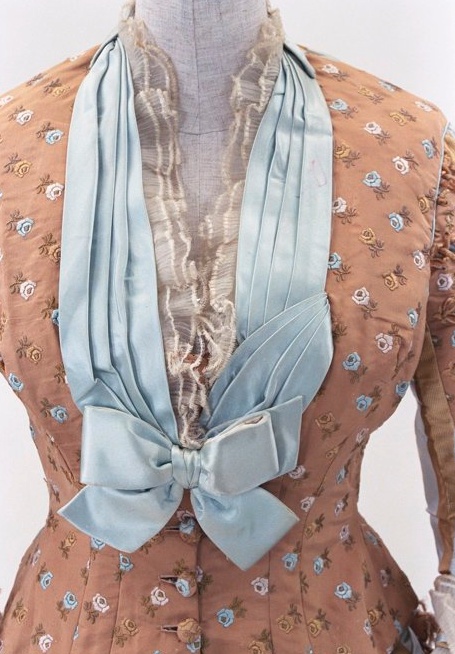

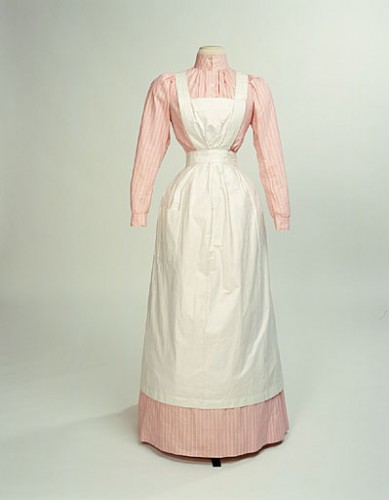

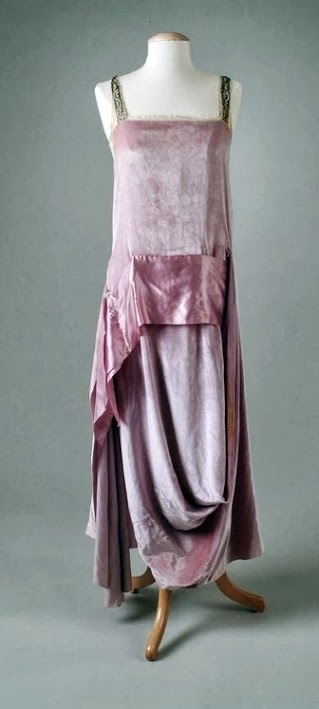

The very pink of perfection!
SculinWell, pink was definitely a possible color, as some northern lichens can create some beautiful hues of pink dye wise. A lot of places considered pink to be a more masculine color also, so it wasn’t used for women frequently until after the renaissance. Before then you can find it referred to as flesh or carnation.
What a feast for the eyes! But I want the 1720-30 Robe Volante – how beautiful! It would make the perfect dressing gown for me. Bliss.
Wonderful sources of inspiration, and a tribute to the colour pink, a colour which in our time has become so trite.
Yummm….Pink is not something I have a lot of in the stash, but I’m liking having a reason to keep my eyes peeled for a good deal on some pretty pink silk!
I’m not a huge fan of pink, but certain shades can be very nice in moderation. The bodice in this painting is my favorite pink item in the history off pink items:
http://oldrags.tumblr.com/image/7470558797
Unfortunately, none of the pictures in this post loaded. I can see them on the pinterest board, but not here. I have tried viewing your blog on different applications and different computers, but it loads very slowly or not at all. I’m not sure if the problem is with your server or my internet connection. I just finished my masquerade challenge and tried to post a link on the page, but I’m don’t think the comment actually posted and I can’t load the page so I can’t tell.
[WORDPRESS HASHCASH] The poster sent us ‘0 which is not a hashcash value.
I can see the pictures now! I’m actually quite surprised to see this comment here. My computer told me it had been deleted by the spam filter. I am extra certain now that the fault was with my internet and not with Word Press.
I’m looking forward to this challenge! I have recently acquired a pink wool blanket that will make a very cozy petticoat.
I love that pattern!
Ooo I love this challenge! It will be so much fun to do!
I’m one of those with not much pink in the stash… in fact, I don’t thin k I have any that could be used historically. So I will definitely pass on this challenge; but still a lovely inspiration post. 😉 That spencer has such a lovely front…
I normally avoid pink like the plague, so I should probably make a special effort to do this challenge.
Actually, if you boil linen with safflower, you get bubble gum pink rather than yellow. Safflower was a well known dye in the middle ages and Renaissance so the color pink isn’t really a modern concept. It just wasn’t called pink until the modern era.
http://2.bp.blogspot.com/-sYJ95uGGAJs/Tdz8kqM-iCI/AAAAAAAADTo/YutQq8Uahvk/s1600/giovanni+battista+moroni.jpg
Also, the cleaned version of Moroni’s Gentleman in Pink. Moroni was no shrinking violet when it came to pink. Everything from pepto bismal to near hot pink looks to be in his paintings.
I might have to sit that one out…the Norse didn’t use pink at all or I would have made a tunic. 😉
ipernity.comToo bad I didn’t see this comment earlier! The Norse very much had access to pink.
I’m not sure if the photo will post, but there is a lady that used to come to Pennsic every year and show the wide variety of colors that could be achieved using ingredients known to Northern Europe in the 12th -14th Centuries. The Norse had madder – a bit of yellow or an acid would easily get a bright pink with the madder.
[…] PinkRed: I have a Steampunk skirt that is almost […]
I have been hoarding beautiful blush pink fabric, feathers and lace for a n early 1900’s hat a la Downton Abbey.
Yippee done early to give me time for Fairytale coming up
I have completed my submission for the pink challenge! It was a learning process and a challenge. On to the next.
http://jninecostumes.blogspot.com/2014/02/pink-18th-century-stays-learning-curve.html
[…] project for the HSF Challenge #3: Pink is a silk belt style sash for my square neck 1812 gown. It’s a small project because […]
[WORDPRESS HASHCASH] The comment’s server IP (66.155.9.50) doesn’t match the comment’s URL host IP (192.0.81.250) and so is spam.
I’ve just posted about my completion of this challenge! A pink Regency belt sash.
http://quinnmburgess.wordpress.com/2014/02/11/hsf-3-a-pink-regency-belt-style-sash/
Best, Quinn
To fulfill this challenge, I crocheted a pair of pink garters.
http://amodernneedle.wordpress.com/2014/02/02/hsf-3-pink-the-pink-tasseled-garters/
I made a pink and white striped 18th century English back gown.
Laurie
http://teacupsamongthefabric.blogspot.com/2014/02/18th-century-pink-frothiness-for.html
My blog has moved so the pink English back gown can now be found here: http://teacupsinthegarden.blogspot.com/2014/02/18th-century-pink-frothiness-for.html
http://levagabondage.blogspot.com/2014/02/chalenge-three-pink.html
I made a pink 1920’s blouse and a pair of garters (and a coat)! Modeled photos coming soon.
http://isabelladangelo.blogspot.com/2014/02/historical-sew-fortnightly-14-challenge.html
A pink 1790’s gown. 🙂
Just now posted about my pink challenge!
http://calicoclodhoppers.blogspot.com/2014/02/hsf-14-pink-of-past.html
thanks so much!
http://thequeenlymask.blogspot.co.at/2014/02/3-pink.html
I made the Vionnet Dress. the Colour and Pattern-Challenges this year are not made for me 🙂
[…] The Challenge: #3: Pink […]
[WORDPRESS HASHCASH] The comment’s server IP (66.155.9.55) doesn’t match the comment’s URL host IP (66.155.11.238) and so is spam.
http://thedreadedseamstress.blogspot.com/2014/02/sew-historical-fortnightly-2014-3.html
Just blogged my pink challenge, crocheted fuchsia flowers from an 1850 pattern:
http://knotrune.wordpress.com/2014/02/16/hsf-challenge-3-pink/
[…] The Challenge: Pink! […]
[WORDPRESS HASHCASH] The comment’s server IP (184.168.193.205) doesn’t match the comment’s URL host IP (184.168.186.1) and so is spam.
I have completed the pink challenge, my first in this year’s challenge. You can find my documentation at:
http://sewingfromanothertime.wordpress.com
Thank you,
Prentice
Here is my offering for the Pink challenge
http://wandabvictorian.wordpress.com/2014/02/19/hsf-14-3-pink/
http://sarahlizzi.blogspot.com/2014/02/hsf-143-pink-eighteenth-century.html
A new set of stays!
Finished on 17 February, took a week to get photos. I present a 1490s gown fully lined in a beautiful dusky pink:
http://dutchrenaissanceclothing.wordpress.com/2014/02/24/transition-era-wrap-gown-hsf3-pink/
Very late once again but I finally finished my entry: an 18th C pink and aqua floral chintz ensemble. http://costumerscloset.blogspot.com/2014/02/historical-sew-fortnightly-3-pink-pink.html
Hi, finally got this posted here.
Made a clutch to go with my 1930s outfit.
https://sites.google.com/site/randysneedlecraftroom/current-projects/thehistoricalsewfortnightly2014challenge3pink
[…] #3: Pink […]
[WORDPRESS HASHCASH] The comment’s server IP (192.0.82.33) doesn’t match the comment’s URL host IP (192.0.78.13) and so is spam.